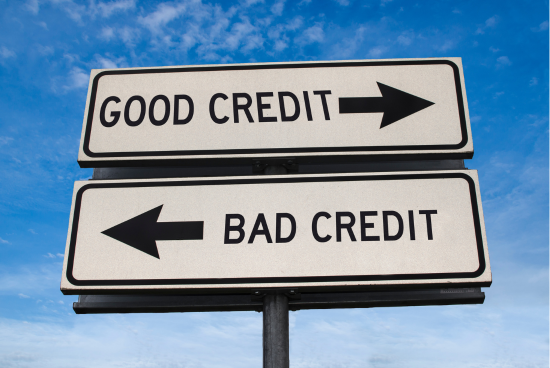Stay Informed. Stay Empowered.
Subscribe to the Best of Cal Coast for curated financial education and trusted thought leadership—delivered straight to your inbox.
Si continúas, abandonarás el sitio web de California Coast Credit Union. Ten en cuenta que no nos responsabilizamos por la exactitud, seguridad o contenido de otros sitios web. Te recomendamos revisar las políticas de privacidad y seguridad de todos los sitios web que visitas. California Coast Credit Union no garantiza ni se responsabiliza por ningún producto ni servicio externo obtenido a través de nuestro sitio web.
ContinuarUtilizamos cookies para facilitar la navegación del sitio, analizar el uso del sitio y mejorar nuestras estrategias de comercialización, como se explica en nuestra política de privacidad. Al seleccionar "acepto", aceptas que se almacenen cookies en tu dispositivo.
Cal Coast Credit Union en colaboración con Filene y HerMoney
2 de enero de 2025

Your Credit Score is Like a Bonsai Tree
It requires careful tending and thoughtful behavior over time to produce the best results. Ten mucho cuidado con tu crédito, paga tus facturas a tiempo y sé un prestatario responsable, y tu puntaje de crédito te ayudará a ser elegible para los mejores términos en tarjetas de crédito y préstamos.
Aunque los prestamistas tienen prohibido tomar decisiones basadas en el género o el estado civil de un cliente, no siempre fue así. Antes de la Ley de Igualdad de Oportunidades de Crédito de 1974, las mujeres estaban obligadas a tener un cofirmante masculino en los préstamos. Los bancos también tenían la libertad de cobrarnos tasas de interés más altas o exigirnos que hiciéramos pagos iniciales más altos que los hombres para obtener un préstamo.
Todavía existen algunas disparidades en el mundo del crédito, principalmente debido a la desigualdad salarial, lo que hace que sea más difícil para las mujeres obtener la aprobación para un préstamo con los mejores términos. Dicho esto, en lo que respecta al puntaje real, lo único que importa es cómo manejas la deuda. Conocer los factores que determinan tu puntaje de crédito te ayudará a optimizar este número de tres dígitos tan importante.
Tu puntaje de crédito ayuda a las cooperativas de crédito, bancos y otras empresas a decidir qué riesgo financiero presentas. Se basa en su historial como prestatario, junto con varios otros patrones de comportamiento financiero. Un puntaje de crédito es un número de tres dígitos que generalmente oscila entre 300 y 850. Si tienes un puntaje bajo, puede indicarle a un prestamista que es más probable que pagues tarde o incumplas con el pago de un préstamo. Por el contrario, cuanto mejor sea tu puntaje, mejores serán las tasas que obtendrás en hipotecas, préstamos para autos, tarjetas de crédito y otros tipos de préstamos.
Tu puntaje de crédito se basa en los datos de tus informes de crédito o tu historial crediticio. Hay tres agencias principales de informes de crédito (Experian, Equifax y TransUnion) que se dedican a recopilar información para tu expediente de crédito. Obtienen esa información de las instituciones financieras y de los registros públicos.
Las agencias de informes crediticios proporcionan la información que han recopilado para tu expediente crediticio a las agencias de calificación crediticia. Luego, estas compañías calculan tus puntajes de crédito... Sí, tienes múltiples puntajes de crédito.
Probablemente hayas oído hablar de los puntajes FICO. Los puntajes FICO se basan en un modelo de puntuación desarrollado por una empresa: Fair Isaac Corp. (ahora conocida como FICO). Pero no son la única alternativa. También está VantageScore, creado por las agencias de informes crediticios para competir con FICO.
Para hacer las cosas aún más complejas, FICO y VantageScore también generan múltiples versiones de tu puntaje de crédito según qué datos sean más relevantes para sus clientes (léase: prestamistas que les pagan por el acceso a los puntajes de los consumidores). Por ejemplo, los prestamistas de automóviles tienen un puntaje específico de su sector, las compañías de tarjetas de crédito tienen el suyo, e igual las aseguradoras, los prestamistas de hipotecas, etc.
Afortunadamente, todos tus puntajes de crédito se basan en tu comportamiento como prestatario. Por lo tanto, conocer uno de tus puntajes de crédito te da una buena idea de cómo es tu caso cuando se utilizan otros modelos de puntaje.
Tu expediente de crédito contiene un historial de tu uso del crédito, que incluye cuánto dinero pediste prestado, a quién y cuánto tiempo atrás, si pagas tus facturas a tiempo y si recientemente solicitaste más crédito. Toda esta información se utiliza para calcular tu puntaje de crédito.
Esto es lo que determina tu puntaje en orden, desde lo que más lo afecta hasta lo que menos incide:
The credit reporting industry knows a lot about you. But there are certain things that are not included in your consumer credit file and therefore do not factor into your credit score, including:
A score of 670 or higher is considered a good credit score by most lenders. A score of 800 or higher is considered exceptional. According to Experian, 67% of Americans have a FICO score of good or better.
It's important to know that whatever your score may be, it's up to the individual lender to say if your particular score meets their criteria for a loan and at what rate. As an example, a score of 670 might qualify you for a loan at a favorable rate with one lender, but another lender could tell you they require a loan of, say, 700 or higher.
One interesting thing to note: Women and men have nearly identical credit scores, on average — 704 and 705, respectively, according to Experian’s recent analysis of credit and debt data.
It takes time and patience to build a solid credit history. A few rules of thumb to follow that can help you on the path to getting or maintaining a good credit score:
¿Tienes preguntas? ¿Quieres más información? Nos complace contactarnos.
Prestando servicio a cualquier persona que viva o trabaje en los condados de San Diego, Riverside, Orange, Los Angeles, Ventura, Imperial o San Bernardino.
Número de ruta/ABA: 322281578
Nº DE IDENTIFICACIÓN NMLS 407951
